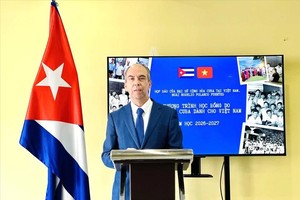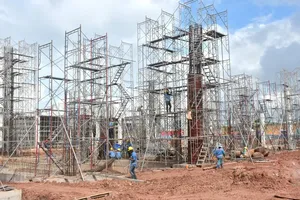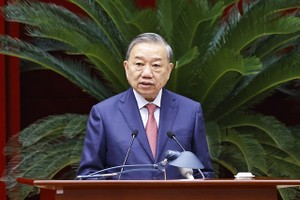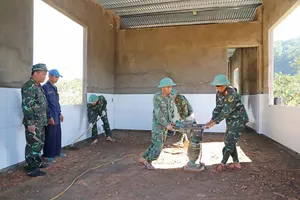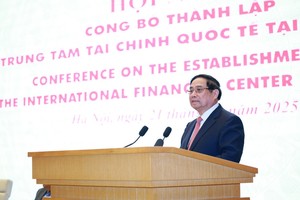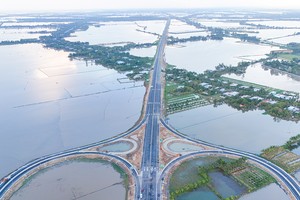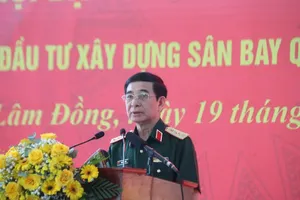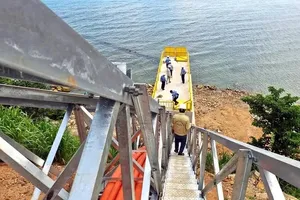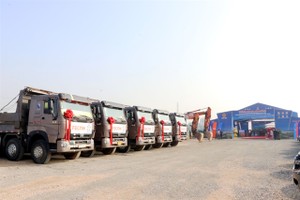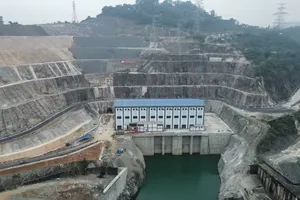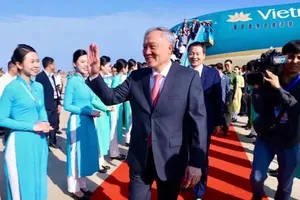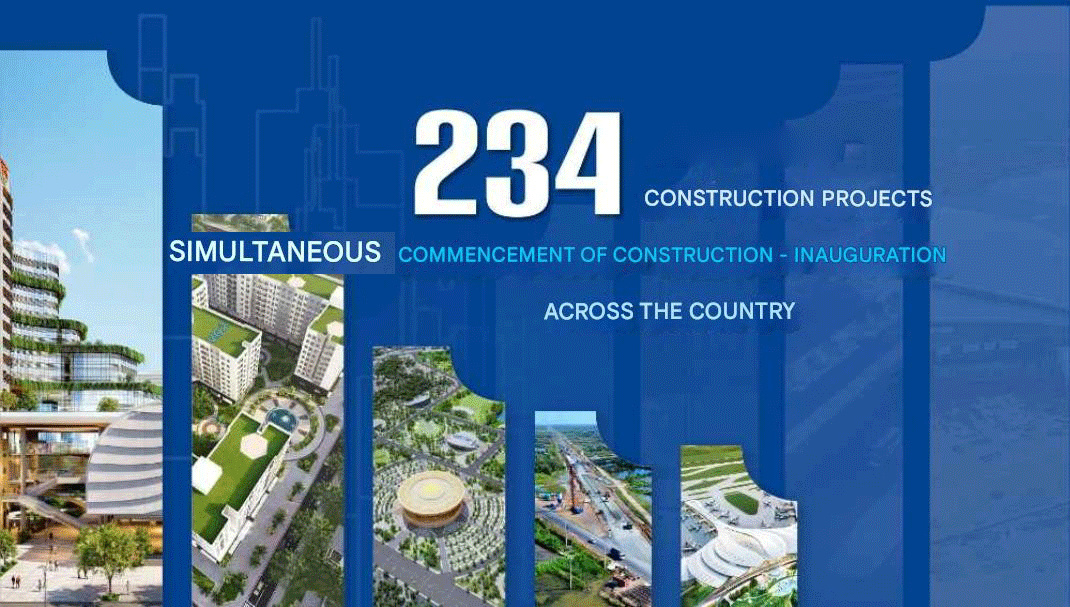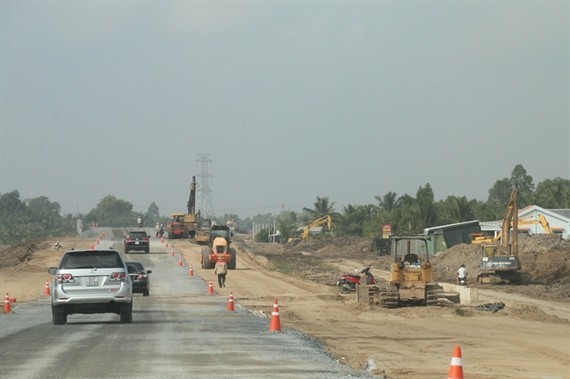
In a pattern that seems to have prevailed for years, a transport project is usually put into operation soon after its inauguration, but then within a short time there is a need for its expansion or upgrade. What is more surprising is that even projects that are still under construction are being reconsidered for expansion or an upgrade. Such as in the case of the Hanoi Highway which has been expanded four times and still not complete. It may be that this Highway may even be further expanded.
The Ho Chi Minh City to Long Thanh to Dau Giay Expressway was started in 2009 with an original design plan of four lanes, then soon after increased to six lanes and now being considered for eight lanes. For all we know it may also be extended to twelve lanes soon. The 17 km long metro line 1 has not yet been put into a trial operation but is being considered for an extension to include the route to Binh Duong and Dong Nai provinces. More recently, the 51 km long Trung Luong to My Thuan Expressway was put into use with only four lanes, with two lanes going in each direction, but with no emergency stop lane. This is hardly the criteria to term it as an expressway.
It is a mystery to understand even in the pre-development stage the projects policy making agencies, the appraisal departments, and the design and approval units do not consider the projects final completion stage at the first time prior to its implementation. This phase is very important for consideration because expanding any project costs add resources, money and effort besides additional socio-economic consequences arising after each expansion.
The most typical example is that of the Rach Mieu Bridge, a cable bridge connecting the two provinces of Tien Giang and Ben Tre. When the bridge was still in the design phase many people thought it was impractical because the bridge was only 12 meter wide with two lanes for cars and two lanes for motorbikes, hence besides being too expensive it also became quickly overloaded and faced massive congestions. Again, it needs to be reconsidered why all this money was spent money and effort put into an impractical project, when by just increasing the investment level the bridge could have been constructed with four to six lanes.
The project was clearly miscalculated at the time of planning when the responsible authorities thought that such a bridge design was enough because Ben Tre is a small province, with limited product sales mainly of coconuts and not much traffic. When the Co Chien bridge connecting Ben Tre to Tra Vinh province was completed in 2015, people witnessed huge congestions on the Rach Mieu bridge stretching for tens of kilometers especially during the holidays. Later, authorities planned an expansion of the bridge by additional border space on both sides, like the Saigon bridge, to increase the load, but this did not work. Finally, by 2022, it has become necessary to build the Rach Mieu 2 bridge to reduce the load on Rach Mieu 1 bridge at an investment of around VND 6,000 bln.
There are very few countries in the world that have to expand their transport infrastructure after only a few years of completion, such as being done in Vietnam. It is a fact that any plan to widen a road comes with many hassles. The first things that are to be completed are site clearance and compensation documents, which costs a lot of money besides also causing endless difficulties for people living on both sides of the road. Some houses have to be cleared two or three times, while others have to be completely cleared, creating insecurity and discontent among the people.
The expansion also causes inconvenience to construction units, especially when they have to repeatedly relocate underground systems such as sewers, electric cables, telecommunications cables, and power poles. This involves a complicated mobilization process of technical teams, machinery, and labor for the roadwork to be completed. Moreover, the expansion standards between the old and the new is not technically good, because each stage involves use of different technologies and materials.
Urban economics shows that if a project focuses on making a one-time investment for the highest quality construction, it can be very expensive at first, but the benefits are greater for the long-term. Good quality finished works put into operation bring maximum benefits, with no need to repair, patchwork, upgrade, or expansion later. It is calculated that the cost of upgrading a road made many times is more expensive than a first time made good quality road. The costs to fix the problems on that road cause traffic accidents, fires, and many breakdowns.
In 1967, South Korean President Park Chung Hy was determined to build a national highway nearly 500 kms in length from Seoul to Busan, the southernmost coastal city. This highway runs along the country and is made with the best quality standards in the world, with twelve lanes, 57 new bridges across a total of 1,661 meters, one underpass of 185 meters, and 102 soundproof walls covering a total of 48,312 meters, with the highway capacity for speed upto 120 km per hour.
To make this road, the South Koreans spent seven years and invested around US$800 bln. This was a huge financial amount at that time when South Korea was still known to be an impoverished country with GDP per capita of only US$200. Nonetheless, Mr. Park decided to venture into this project using the best quality standards the very first time. South Korea invited technology from abroad to make this road which now serves as a lifeline for the country. This highway has brought great benefits to South Korea not only in terms of economy but also for social and national security. Later, high-speed railways were also designed along this line. Annual benefits from highways bring in an estimated US$42 bln per year for South Korea.
Vietnam seems to lack the foresight and strategic planning in building economic infrastructure. Because if we have a strategic vision, we can have a North-South express train with a speed of 150 km per hour or even 200 km per hour from Ho Chi Minh City to Hanoi, which will take only 12 hours. Such a project will ease the congestion at Tan Son Nhat and Noi Bai airports.
The southern provinces can implement the construction of a number of ring roads 2, 3, 4 and highways Ho Chi Minh City to Moc Bai, Ho Chi Minh City to Xa Mat, Ho Chi Minh City to Chon Thanh, Ben Luc to Long Thanh, Bien Hoa to Vung Tau, and other routes in the Mekong Delta. The Government, ministries, branches, and provinces should calculate how not to expand, add lanes, add bridges, or repair infrastructure after only a few years of being put to use. This increases the costs and reduces trust among the people.
